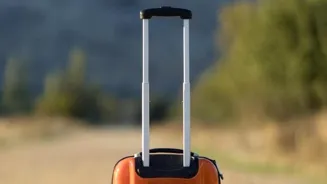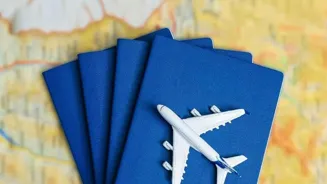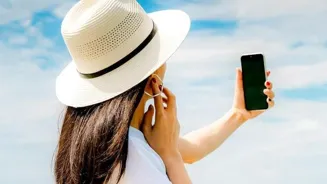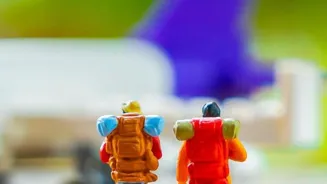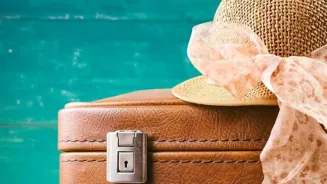Unraveling Language Barriers While Traveling: Tips for Indian Globetrotters. Dive into a world of linguistic exploration!
Namaste, wanderers! Planning a trip abroad is exciting, isn't it? Imagine yourself
soaking in the sun on a beach in Bali, exploring ancient ruins in Rome, or navigating the bustling streets of Tokyo. But hold on a minute! Have you considered the potential language barriers you might face?
For us Indians, used to the comfort of multiple languages spoken within our own country, stepping into a place where Hindi or English isn't widely understood can be a bit daunting. Don't worry, though!
With a little preparation and a few clever tricks, you can navigate these linguistic hurdles like a pro and enjoy a smooth, enriching travel experience. This article is your handy guide to tackling communication challenges on your next international adventure.
We'll explore practical tips, useful technology, and even some fun ways to connect with locals, language difference notwithstanding. So, pack your bags, brush up on your non-verbal communication skills, and get ready to explore the world with confidence!
Preparation is key for travel success: learn basic phrases, use language apps, understand local customs
First things first, preparation is key. Before jetting off, invest some time in learning a few basic phrases in the local language of your destination. "Hello," "Thank you," "Please," "Excuse me," and "Where is…?" can go a long way in showing respect and making interactions smoother.
There are numerous free apps and online resources available that can help you learn these essential phrases quickly. Consider downloading a language learning app like Duolingo or Memrise onto your phone.
These apps offer interactive lessons and gamified learning, making the process fun and engaging. Even knowing how to count from one to ten can be incredibly useful when bargaining in local markets or understanding prices.
Don't underestimate the power of a simple smile and a genuine effort to speak the local language. Locals will appreciate your effort, even if your pronunciation isn't perfect.
Moreover, familiarizing yourself with common gestures and customs in your destination country can prevent misunderstandings and cultural faux pas. Researching these nuances beforehand will ensure that you are respectful of the local culture and avoid unintentionally offending anyone.
For instance, in some cultures, direct eye contact is considered rude, while in others, it's a sign of respect.
Technology aids travelers with language barriers using translation apps, voice notes, and maps
Technology can be a traveller's best friend in overcoming language barriers. Translation apps have become incredibly sophisticated in recent years, offering real-time translation of spoken and written language.
Google Translate is a popular option, allowing you to translate text by typing, speaking, or even taking a picture of it. Microsoft Translator is another excellent choice, offering similar features and also allowing you to download language packs for offline use.
This is particularly useful when you don't have access to internet connection. Invest in a good quality portable translator device which can work even when you don't have network. These translators have two way translation and can work offline.
Another handy tech tool to learn using are voice notes if the translating doesn't work well. Try using voice notes of your local language with phrases which the recipient can translate and vice versa. Using maps and their pin drop location sharing will allow you to reach hotels, restaurants easily.
There are also apps that can translate menus in restaurants, making it easier for you to order food without any surprises. Remember to download these apps before you leave home and familiarize yourself with their features.
Non-verbal communication is key; gestures transcend language barriers
Non-verbal communication is your secret weapon when words fail you. Body language speaks volumes, and mastering a few basic gestures can help you communicate effectively.
Pointing, miming, and using hand gestures can convey your needs and intentions even when you don't share a common language with someone. Remember to be mindful of cultural differences in body language. Gestures that are considered polite in one culture may be offensive in another.
For example, a thumbs-up gesture is generally considered positive in many Western countries, but it can be seen as rude in some parts of the Middle East. Facial expressions are also crucial in non-verbal communication.
A smile is universally understood as a sign of friendliness and can help to break down barriers and create a positive atmosphere. Make eye contact when appropriate, and use your facial expressions to convey your emotions and intentions.
It is a good idea to use an international phrase book which has images. You can point to the respective picture to communicate on what you need. Also prepare and carry your medical history that might be useful during emergencies.
Visual aids improve communication during travel; use cards, maps, and local resources
Visual aids can be incredibly helpful in bridging the communication gap. Consider creating a small card or booklet with pictures of common items and situations that you might encounter during your travels.
This could include pictures of food, transportation options, accommodation, and essential services like hospitals and pharmacies. You can also include basic phrases written in both your language and the local language.
Show the picture of the item or situation to the person you are trying to communicate with. Another useful visual aid is a map. Carry a physical map of the area you are visiting and use it to point out your destination or ask for directions.
You can also use online maps on your phone, but make sure to download offline maps in case you don't have access to internet connection. Many tourist information centres offer free maps and brochures in multiple languages. Pick up a few of these resources when you arrive at your destination.
You could also get an artist to create visual of medical illnesses that can come handy.
Embrace local culture, connect with locals, learn language, make friends
Embrace the opportunity to connect with locals, language barriers notwithstanding. Don't be afraid to strike up conversations with people, even if you can only exchange a few words. Most locals are happy to help tourists and will appreciate your effort to communicate in their language.
Visiting local markets and smaller shops would be a good idea there you can easily connect with the local shopkeepers. Participate in cultural activities and events to surround yourself with the local language and customs. This can be a fun and immersive way to learn about the culture and language.
Consider taking a language class or hiring a local guide. A language class can teach you basic conversational skills, while a local guide can provide insights into the culture and help you navigate the area. Ask them about the area where they have grown up in and hear their stories.
Respect their local customs and traditions. Be open to new experiences and learn from the people you meet along the way. Connecting with locals may often lead to friendships.
AI Generated Content. Glance/InMobi shall have no liability for the content
